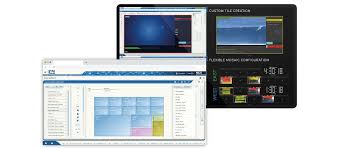
Enhancing Viewer Experience: How Broadcast Monitoring Improves Content Delivery and Performance
In today’s competitive media landscape, delivering an exceptional viewer experience is crucial for broadcasters and content providers. Broadcast monitoring has become an indispensable tool for achieving this goal by ensuring high-quality content delivery and optimizing performance. By leveraging advanced monitoring technologies, media professionals can enhance viewer satisfaction through improved reliability, consistency, and overall content quality.
1. Ensuring High-Quality Content Delivery
One of the primary benefits of Broadcast monitoring is its ability to ensure high-quality content delivery. Advanced monitoring systems continuously assess the audio and video signals throughout the broadcast chain. This real-time evaluation helps detect issues such as signal degradation, audio distortions, or video artifacts before they impact the viewer. By maintaining rigorous quality standards, broadcasters can deliver a seamless and professional viewing experience that meets audience expectations.
2. Minimizing Disruptions and Downtime
Broadcast interruptions and technical glitches can significantly detract from the viewer experience. Broadcast monitoring systems provide real-time alerts for any anomalies or disruptions in the broadcast signal. Immediate detection of issues allows for swift corrective actions, minimizing downtime and ensuring uninterrupted content delivery. By proactively addressing potential problems, broadcasters can maintain a consistent viewing experience and prevent disruptions that could frustrate viewers.
3. Enhancing Reliability and Consistency
Reliability and consistency are essential for building and maintaining audience trust. Broadcast monitoring systems offer comprehensive oversight of the entire broadcast process, including signal paths, content distribution, and playback systems. This level of monitoring ensures that all elements of the broadcast are functioning correctly and consistently. By identifying and addressing potential issues before they impact the viewer, broadcasters can enhance the overall reliability of their service and provide a dependable viewing experience.
4. Optimizing Performance Metrics
Broadcast monitoring tools provide valuable performance metrics that help optimize the quality of content delivery. Metrics such as signal strength, latency, and error rates are continuously tracked and analyzed. This data enables broadcasters to fine-tune their systems and processes for optimal performance. For instance, adjustments to encoding settings or network configurations can be made based on performance data, leading to improved content quality and smoother delivery.
5. Enabling Real-Time Problem Resolution
When technical issues arise, the ability to resolve them quickly is crucial for maintaining a positive viewer experience. Broadcast monitoring systems provide real-time diagnostic information and alerts, allowing media professionals to identify and address problems promptly. Whether it’s a technical malfunction, content inconsistency, or signal interference, having immediate access to detailed data supports rapid problem resolution. This agility helps ensure that viewers receive uninterrupted and high-quality content.
6. Supporting Multichannel and Multiplatform Delivery
In today’s media environment, content is often delivered across multiple channels and platforms, including traditional broadcast, streaming services, and online platforms. Broadcast monitoring systems are designed to support multichannel and multiplatform delivery, providing a unified view of content distribution. This comprehensive oversight helps ensure that content is delivered consistently across all platforms, maintaining quality and performance regardless of the delivery method.
7. Improving Audience Engagement and Satisfaction
A high-quality viewing experience is directly linked to increased audience engagement and satisfaction. By leveraging broadcast monitoring to ensure optimal content delivery and performance, broadcasters can enhance viewer satisfaction. Reliable and high-quality content fosters positive audience experiences, encouraging viewers to return and engage with the broadcaster’s offerings. Improved satisfaction also contributes to higher viewer retention and loyalty.
8. Facilitating Compliance and Quality Assurance
Broadcast monitoring also supports compliance with industry standards and quality assurance. Monitoring systems ensure that content adheres to technical specifications and regulatory requirements, preventing issues that could affect the viewer experience. Compliance with industry standards not only maintains content quality but also helps avoid potential fines or penalties. Quality assurance through monitoring reinforces the broadcaster’s commitment to delivering exceptional content.
Conclusion
Broadcast monitoring plays a critical role in enhancing the viewer experience by ensuring high-quality content delivery, minimizing disruptions, and optimizing performance. Through real-time oversight, performance metrics, and rapid problem resolution, monitoring systems contribute to a reliable and consistent viewing experience. Supporting multichannel delivery, improving audience engagement, and facilitating compliance further underscore the value of broadcast monitoring. Embracing this technology is a strategic approach to achieving excellence in content delivery and maintaining a competitive edge in the media industry.



